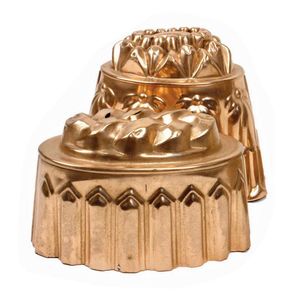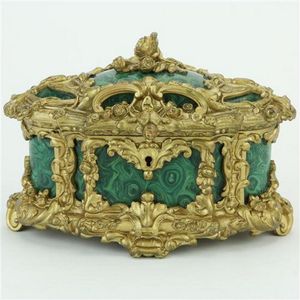Australian Gold Fringe Brooch & Earrings Set
You must be a subscriber, and be logged in to view price and dealer details.
Subscribe Now to view actual auction price for this item
When you subscribe, you have the option of setting the currency in which to display prices to $Au, $US, $NZ or Stg.
- Paste / Rhinestone / Diamante - Paste (or rhinestone or diamante) is the name given to a coloured glass composition used for imitation gemstones, or to imitation gemstones made of glass.
Although the technique of glassmaking had been known for thousands of years, but it wasn't until a lead glass with similar optical properties to diamonds were invented by a German jeweller working in Paris (either "Stras" or 'Strasser") in the early 18th century that "paste" gemstones became popular.
There was no social stigma attached to wearing imitation stones, and they were worn in situations where highway robbery was a possibility. The 18th century settings were of very high quality, equivilent to real gemstone jewellery.
In the nineteeth century the quality of paste jewellery declined and it has remained the poor cousin to genuine gemstones ever since. - Attributed - A cataloguing term where the item in the opinion of the cataloguers, is a of the period of the artist, craftsman or designer, and which probably in whole or part is the work of that person.
- Circa - A Latin term meaning 'about', often used in the antique trade to give an approximate date for the piece, usually considered to be five years on either side of the circa year. Thus, circa 1900 means the piece was made about 1900, probably between 1895 and 1905. The expression is sometimes abbreviated to c.1900.
This item has been included into following indexes:
Visually similar items

Two late Victorian copper food moulds, both varying patterns, highly decorative, one marked 'CM 200½', some damage. Height 9 mm and 13 cm

Ormolu jewellery casket with ornate designs framing marble patterned windows & a velvet lined interior, 18 x 13 x 10 cm.

German figure of a girl reading on a bench, dog at her feet

1901 Port Melbourne VFA Premiership Medal, 9ct gold medal decorated with football & pennants, with text 'Premiers 1901/ Vfa/ Port Melbourne', engraved on reverse, 'Bromley'. Also Victorian Football League lapel badge, made by K.G.Luke. (2 items)
